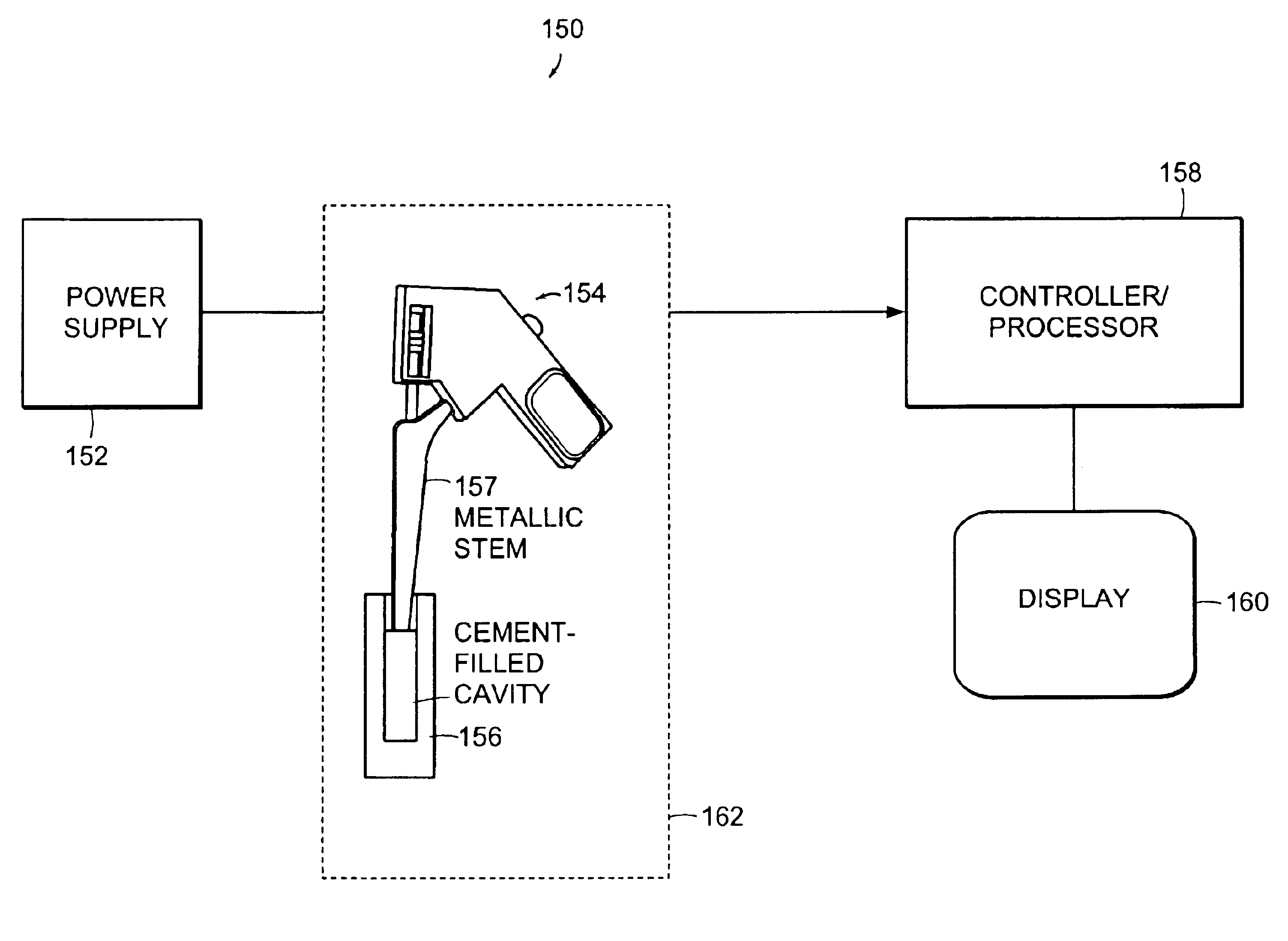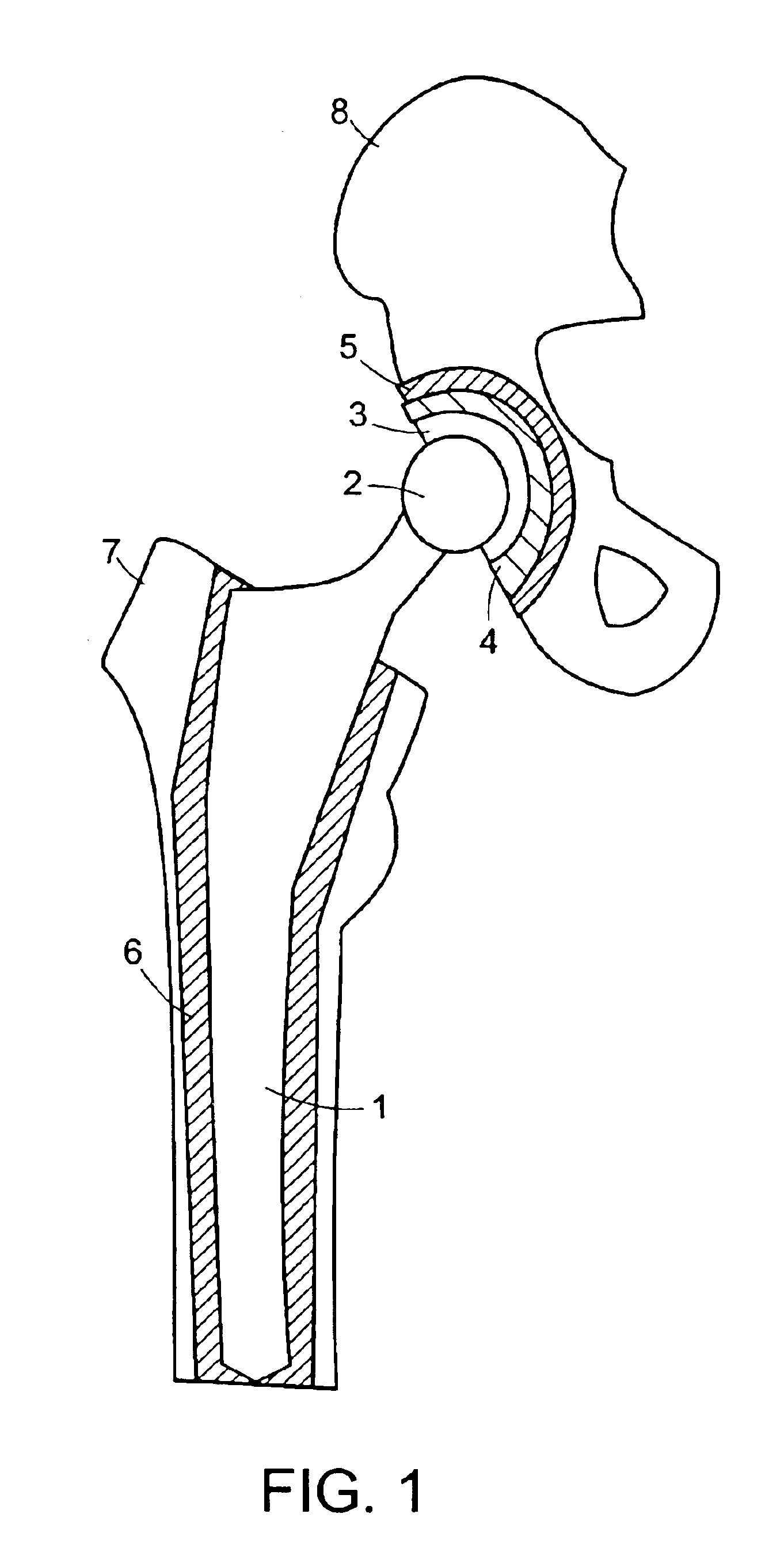System and methods for reducing interfacial porosity in cements
a technology of interfacial porosity and cement, which is applied in the field of system and methods for reducing interfacial porosity in cement, can solve the problems of structural failure and replacement, and achieve the effect of reducing pores
- Summary
- Abstract
- Description
- Claims
- Application Information
AI Technical Summary
Benefits of technology
Problems solved by technology
Method used
Image
Examples
example 1
[0101]The results demonstrate the different interfacial porosity obtained by superimposing oscillatory motion velocity at a single fixed frequency onto a relatively steady insertion. Briefly, the experimental protocol that is followed utilizes insertion of simulated hip stem components (glass test tubes) into Howmedica Surgical Simplex P® bone cement at a cure time of 6 minutes contained in cylindrical acrylic chambers (2.5 cm diameter, 7 cm deep).
[0102]The cement is hand mixed for 30 seconds and centrifuged for 30 seconds at high speed. The top 2-3 mm of cement is scraped away to remove bubbles that migrated during the centrifugation process prior to insertion of the model stems. Both the stems were inserted at an average velocity of 1 cm / sec; in addition, one stem is also oscillated during insertion at 100 rad / sec with an estimated amplitude of 150 microns (peak-to-peak). The cured cement / stem interface are observed and photographed using a light microscope with transmission illum...
example 2
[0105]The results demonstrate the difference interfacial porosity obtained by superposing oscillatory motion velocity at a single fixed frequency onto a slower relatively steady insertion. The experimental protocol that is in Example 1 is used, with an insertion at an average velocity of 0.25 cm / sec.
[0106]FIGS. 25A and 25B present light micrographs of the interface between the model stem and the cement. FIG. 25A illustrates the interface obtained after steady insertion at an average velocity of 0.25 cm / sec without oscillation. FIG. 25B illustrates the interface obtained after steady insertion at an average velocity of 1 cm / sec with an oscillation of 150 microns peak-to-peak amplitude and a frequency of 100 radians / second. Both images are relatively free of small scale pores. Again, larger scale structures (100-300 microns) seen in FIG. 25B appeared smeared with indistinct borders giving the general appearance of a more uniform interfacial cement layer.
[0107]After optical examination...
example 3
[0108]The results demonstrate the difference interfacial porosity obtained by superposing oscillatory motion velocity at a single fixed frequency relatively steady insertion with intermittent pauses. The experimental protocol that was in Example 1 was used, with an insertion at an average velocity of 0.25 cm / sec.
[0109]FIGS. 26A and 26B present light micrographs of the interface between the model stem and the cement. FIG. 26A illustrates the interface obtained after steady insertion at an average velocity of 0.25 cm / sec without oscillation. FIG. 26B illustrates the interface obtained after steady insertion at an average velocity of 1 cm / sec with an oscillation of 150 microns peak-to-peak amplitude and a frequency of 100 radians / second. Both images are relatively free of small scale pores. Again, larger scale structures (100-300 microns) seen in FIG. 26B appeared smeared with indistinct borders giving the general appearance of a more uniform interfacial cement layer.
[0110]After optica...
PUM
| Property | Measurement | Unit |
|---|---|---|
| diameter | aaaaa | aaaaa |
| diameter | aaaaa | aaaaa |
| insertion velocities | aaaaa | aaaaa |
Abstract
Description
Claims
Application Information
 Login to View More
Login to View More - R&D
- Intellectual Property
- Life Sciences
- Materials
- Tech Scout
- Unparalleled Data Quality
- Higher Quality Content
- 60% Fewer Hallucinations
Browse by: Latest US Patents, China's latest patents, Technical Efficacy Thesaurus, Application Domain, Technology Topic, Popular Technical Reports.
© 2025 PatSnap. All rights reserved.Legal|Privacy policy|Modern Slavery Act Transparency Statement|Sitemap|About US| Contact US: help@patsnap.com



